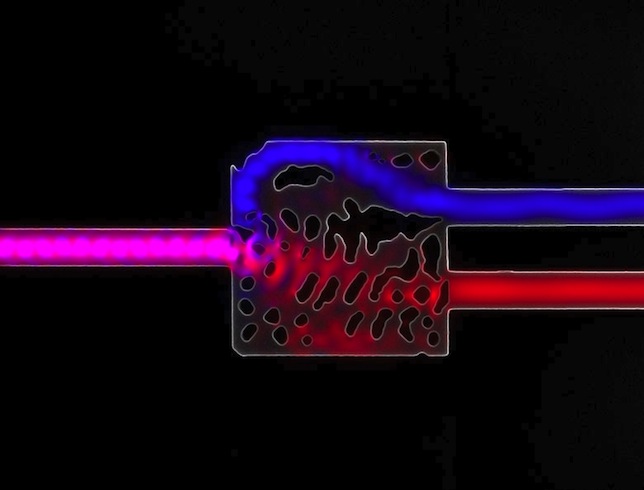Research: Light Could Replace Wiring for Data Transport in Computers
- By Dian Schaffhauser
- 07/02/15
Forget about wires. Computers of the future may send data through beams of light, just like it's moved on fiber cable. The result would be
faster and more energy-efficient computers. The research that paints this scenario is taking place at Stanford University, where electrical engineers are experimenting with the practical use of light instead of electricity to
transport data within a computer, as reported in a
paper recently published in Nature
Photonics.
Several years ago a Stanford engineer found that up to four-fifths of microprocessor power was used in sending data via electrons over
wires. Optical transport, however, "uses far less energy than sending electrons through wires," said lead author and graduate student Alexander
Piggott. "For chip-scale links, light can carry more than 20 times as much data."
The challenge up to now with that approach has been that these optical or silicon-based "interconnects" have had to be built singly — an
impractical approach when thousands would be needed for each electronic system where they were used.
The breakthrough by the Stanford engineers is development of an "inverse design algorithm." The researchers specify what the optical
circuit is supposed to do, and software spells out how to fabricate a silicon structure or pattern to do it. For example, the silicon
interconnects could create a switch or a conduit to send a specific frequency of infrared light to a particular location, thereby replacing a
wire for that job.

The structures are so refined, according to the engineers, more than 20 of them could fit lined up next to each other inside a human hair.
In effect, the algorithm can create silicon prisms that bend infrared light. The result is a pattern from which additional silicon could be
molded through "standard industrial processes."
"Our structures look like Swiss cheese but they work better than anything we've seen before," said co-author Jelena Vuckovic, a professor of
electrical engineering at Stanford, in a prepared statement. "We used the algorithm to design a working optical circuit and made several
copies in our lab."
Added Piggott, "Our manufacturing processes are not nearly as precise as those at commercial fabrication plants. The fact that we could
build devices this robust on our equipment tells us that this technology will be easy to mass-produce at state-of-the-art facilities."
Besides developing a technique that could be used to create computers that rely on light instead of electricity for data transport, the
researchers said they foresee many other potential applications for the inverse design algorithm in optical and quantum communications and
microscopy systems.
About the Author
Dian Schaffhauser is a former senior contributing editor for 1105 Media's education publications THE Journal, Campus Technology and Spaces4Learning.